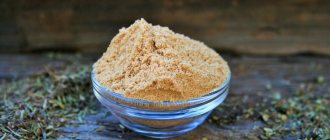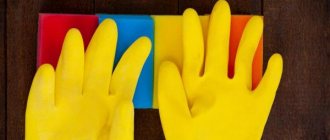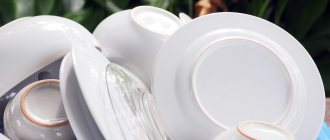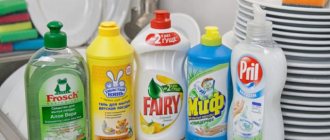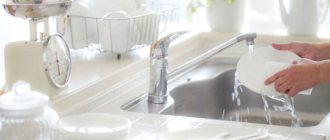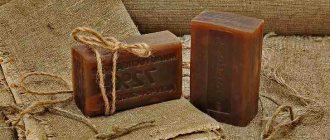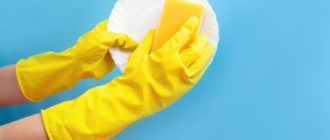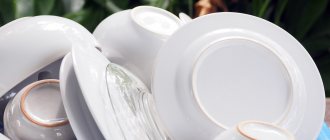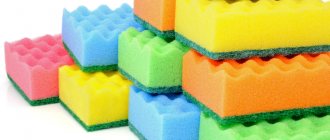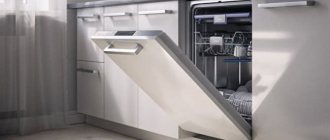Caring for dishes not only extends their service life and preserves all consumer qualities. By following the rules for caring for dishes, the housewife can protect her household from unintentional harm to health.
Caring for kitchen utensils should begin with the right choice of detergents and cleaning products. They must be completely safe and approved by health officers for use in the household. Fairly simple rules for caring for kitchen utensils include aspects of organizing washing. Not everyone has the opportunity to buy an expensive dishwasher. Therefore, washing kitchen utensils by hand is a common way to maintain cleanliness.
Knowing how to clean certain types of dishes will be useful for both young and experienced housewives.
Rules for safe hand washing of dishes
The downside of the holiday is cleaning up after the feast - you have to wash and clean mountains of dishes, wash and iron tablecloths, clean the kitchen. Often the thought of washing dishes keeps us from inviting friends or a large number of guests. Maybe it’s better to go to your friends yourself or invite them another time?
After reading the rules for washing dishes, I hope you will stop being so afraid of this activity.
The best thing, of course, is to have a dishwasher! For several reasons, it would be a good idea to convince your husband of the need for such a unit in the kitchen: it is estimated that using a dishwasher saves a family of four more than 200 hours per year; This saves time and money on detergents. Washing dishes in a machine is about half the cost, since you don’t have to soap every item. The skin on your hands will stop cracking and peeling, and your nails will not peel.
Well, until you convince your husband, take advantage of our tips on organizing manual dishwashing, taking into account modern realities.
There are many types of dishwashing soap on sale, for example, laundry soap, “Housewife”. Grate a bar of soap on a fine grater, put the shavings in a plastic bottle and fill with water. Make a hole in the lid and use the soap solution when washing dishes.
There is also a proven, cheap, harmless means for safely washing dishes, like dry mustard: 1 tbsp. l. for 1 glass of water. It has a degreasing effect even when washed with cold water. Baking soda is often used to wash dishes.
There is a huge range of modern dishwashing detergents on sale: “Cinderella”, “Pemolux”, “Fairy”, “Comet”, “Gala”, powder and liquid. All of them perfectly degrease dishes, and with their help it is easy to wash off dried food residues.
Some powdered cleaners contain abrasive materials. Aluminum and Teflon cookware cannot be cleaned with such products. Abrasive particles can scratch the thin film on the surface of aluminum cookware, which protects the aluminum from oxidation.
Abrasive cleaning products contain fragrances, alkaline additives, and sometimes disinfectant additives. Such preparations are usually available in the form of powders or pastes. And although these detergents contain glycerin or similar substances, which not only prevent the preparations from drying out, but also soften the skin of your hands, always wear rubber gloves when using them.
Depending on the type and purpose of cleaning products, their packaging and packaging may be different. You can choose not only those that are most suitable for their intended purpose, but also in convenient packaging. You should think in advance where you will store these medications: put them in a cabinet, leave them at hand, or on the kitchen shelf.
dishwashing detergents , and the list is growing. Choose the products that are right for you.
How to make the washing process quick and enjoyable?
To make washing a large amount of dishes less tiring, you should follow a few tips:
- Take beautiful sponges, brushes, brushes, and a product with your favorite scent. Cheerful, bright colors lift your spirits, and a pleasant aroma sets you up for positive thoughts;
- "Eat the elephant one piece at a time." This phrase applies to many areas of life and actions, including the washing process. Here it works like this: lather the sponge well, wash the products with it until the foam runs out. After this, take a break for 10-15 minutes. This is a psychological technique that will help you wash even a large mountain of dishes without getting too tired;
- Use rubber gloves. They will serve as protection for the delicate skin of your hands; after washing you will not have to suffer from dryness or the appearance of hangnails;
- Wash plates, mugs, and cutlery immediately after eating. Thus, a huge mountain will not appear in the sink, which will take more than an hour to wash;
- Make the process as enjoyable and interesting as possible - listen to music, a podcast, watch a movie or TV series. This will help you spend time not only fun, but also useful;
- Relax. In the constant bustle, it is hardly possible to find a minute to be alone with yourself. Repeated movements are great for forgetting about problems, relaxing, they calm you down, and help you to abstract yourself.
Instructions for washing tableware by hand
The dishwashing instructions will tell you how to properly organize this process. What you should never do is use washing powders to wash tableware. Even after repeated rinsing, substances harmful to the human body remain on the dishes.
One of the basic rules for caring for dishes and kitchen utensils: wash them immediately after use (and still wash them whenever possible).
It’s a good idea to first fill the dishes with water for about ten minutes. Although fats do not dissolve in water, the top layer of dirt will become wet and washed off.
To wash greasy dishes with your hands, of course, you need hot water. It is easier to wash greasy dishes in water with the addition of vinegar.
Never stack fatty plates (on top of each other), and if your family has this habit, be sure to wean them off. This will make your work much easier.
It is better to soak the dishes that contained dough, beaten eggs or omelette first and wash them with cold water, and then with hot water. The fact is that hot water causes the dough and egg whites to curl up, as if they were boiling, and stick firmly to the walls of the dish.
Begin washing dishes with the least contaminated ones - with teaspoons and saucers, bowls, bread plates. Fatty plates and pans are washed last.
Remember! If detergents are used to wash dishes, then the water should be hot - not lower than 50-60 ° C, because in cold water the cleaning effect of the preparations is reduced. Earthenware is washed in warm water, crystal - in lukewarm or cold.
Facilities
We figured out how to properly wash tableware in order to comply with the rules and regulations for the use of utensils when running a catering and restaurant business. The same rules are followed when washing plates and cutlery in educational and medical institutions. Next, we present a photo list of substances that are commonly used in the above actions.
This is how you can quickly and easily wash dishes while preserving human health, which allows you to reuse the same dishes over and over again. Video in this article
will expand your knowledge in the field of disinfection and answer many questions related to the use of detergents for all types of cutlery and glasses. We hope that the rules for operating and maintaining clean kitchen items and work areas will allow you to establish quick and functional cleaning at home.
Methods for washing and caring for enamel cookware
There are different ways to wash dishes with an enamel coating, for example, you can use a solution consisting of hot water and baking soda or mustard (about 50 g per 1 liter of water). After this, be sure to rinse it several times under running clean warm water and wipe with a clean, dry towel.
Enameled dishes that have darkened from long-term use can be bleached using laundry detergent - persalt. To do this, put 1 tablet or 1 tsp in a pan filled with hot water. salt and boil water for about an hour. Then wash the dishes thoroughly with hot water.
When organizing the care of enamel cookware, you need to follow some rules:
- To prevent the enamel from cracking, do not place an empty pan on a hot stove, or a hot pan on a cold stand or in a wet sink;
- Do not pour cold water into a hot pan;
- Never scrub an enamel pan with wire brushes or scourers.
You've probably experienced the difficulty of cleaning a pan with burnt milk. Cleaning will be greatly facilitated by using a cloth soaked in coffee grounds.
Gray deposits on enamel cookware can be easily removed by wiping them with table salt. Is it possible to get rid of the appearance of this plaque altogether? Can. Wash these dishes daily with warm water and baking soda.
Sorting dishes
After you have rinsed all the dishes, double check that you have completely cleaned them. Any remaining sauce or food will be fairly noticeable, but you may need to remove your gloves and check with your fingers to make sure you've removed all the fat. If any dirt remains, repeat.
After you put away your dishes, wipe the rack with a damp cloth, then dry it with a towel to prevent hard water from building up minerals. Wiping down the sink is also a good idea to remove food debris.
Whenever there are dirty dishes in the sink, it means the food has been prepared in some way, which means the countertops and stovetop need to be wiped down as well. Use a sponge with soapy water to remove any crumbs or sticky stains, then wipe down counters with a disinfectant kitchen cleaner if necessary to ensure safe cooking next time.
Caring for cast iron cookware
Cast iron cookware also requires proper care. Wash it with soap and water or a solution of baking soda and ammonia. With their help, fat is easily removed. After this, be sure to rinse the dishes. When caring for cast iron cookware, you can clean it with a solution of vinegar and soda.
Very often, blackness forms on the walls of dishes, especially pans. It can be removed with a cloth soaked in vinegar. After processing, rinse the dishes thoroughly with cold water, preferably several times. If the blackness is very strong, then fill the pan with water, add 3-4 tbsp. l. vinegar and boil for 10-15 minutes.
If food cooking in a pan burns , don’t be upset. Although, in truth, removing burnt-on residue often requires a lot of effort. Sometimes even experienced housewives find it difficult to clean them completely. Of course, you can rub the bottom of the dish with enviable persistence with everything you can get your hands on. But you don't need to do this! - you will ruin the pan by breaking the protective shell, and after a while the pan will start to leak. Fill the pan with a hot solution (1 tablespoon of salt per 1 liter of water) and bring to a boil. If the pan is large or very dirty, make the solution more saturated.
Let stand for several hours and bring to a boil again and pour out the water. Now everything will come off without much effort, you just need to rub the dirt a little.
You can prepare a special solution for cleaning dishes. Mix a little borax and a few drops of ammonia in a glass of water, apply this composition to the dishes. Let it sit for an hour and then wipe with a dry cloth.
How else to remove stains from burnt food? Wipe them with half a freshly cut apple or boil water and onions in it - not a trace will remain of the stains.
Cast iron is destroyed by acids and alkalis. Therefore, you cannot keep hot salty solutions, sour milk, salted fish, potatoes and dishes with added tomatoes in this container.
If the pan has lost its shine over time, you can return the dishes to their original shine by boiling the peelings of apples and pears in it. See what happens to your old pan!
Process steps
Following some rules and an algorithm of actions will help you wash the dishes quickly.
Sorting
The first stage of the washing process is sorting. Its necessity is explained by the fact that cutlery, pots, plates, and cups have varying degrees of contamination. Properly wash dishes in the following order:
- Glasses, mugs, shot glasses, glasses, as they do not come into contact with fat or products with a persistent odor. In this case, soaking is not only possible, but even necessary to skip: the glasses will only become dirtier after lying in the water along with greasy pans and plates.
- Spoons, forks and knives. They also do not require soaking, just wash them with detergent.
- Plates, salad bowls, cutting boards. The latter should be additionally wiped with vinegar if they cut fish or meat. This will disinfect the surface.
- Pots, pans, cauldrons, ladles, baking dishes. They definitely need soaking, otherwise it will be very difficult to remove fat and carbon deposits.
Soak
To quickly wash dishes by hand, you should first soak them. This will soften the stuck-on contaminants, making it much easier to wash them off.
Large food particles must be removed before soaking. Then place the dishes in a large container with hot or very warm water - it can be a basin, a bucket. You can also use a sink, after plugging the drain with a stopper. It is better to add a couple of drops of detergent to the water - this will make soaking more effective. After 20-30 minutes, drain the water and begin the main procedure.
The washing up
After sorting the dishes and soaking the necessary items, you can proceed directly to washing.
The algorithm is as follows:
- Apply 1-2 drops of detergent to the sponge.
- Squeeze the product in your hands several times until foam appears.
- Wash the plate, cutlery or pan from all sides, carefully scrubbing off any remaining food.
- If necessary, use a metal sponge or a stiff brush to remove stubborn dirt.
- Rinse the product thoroughly under running warm water, preferably several times. If the water is cold, the fat will be washed off less easily.
Attention! In order to save money, you should not wash off the foam from the dishes with a sponge, because this will also wash out the washing foam.
Drying
After washing, you can immediately put the dishes in the dryer, where excess moisture will drain from them. It is not necessary to wipe the devices with a towel or dry cloth. Moreover, scientists have proven that a towel is a favorable environment for the growth of bacteria, some of which can cause poisoning if they get on plates or cups.
But glasses, mugs, shot glasses, and jugs should still be wiped, as water leaves stains on them that spoil their beautiful appearance. Therefore, the best solution would be to wipe only transparent products. To prevent bacteria from growing on the towel, you need to dry it and change it every 7 days.
Caring for ceramic cookware
When caring for ceramic dishes, wash them with a solution of baking soda at the rate of 20 g of soda per 1 liter of hot water. To avoid smudges and stains, be sure to wipe the washed dishes dry with a clean towel.
Cracks in ceramic dishes can be repaired using hot, melted granulated sugar. Place the dish in need of repair on the fire and pour sugar into it. The syrup will spread over the surface and “cover up” all the cracks.
Although it is better not to use cracked dishes at all. They say it's a bad omen.
Porcelain dishes darken over time. The whiteness of porcelain can be restored by wiping it with baking soda, salt and vinegar (if there are no patterns or gilding), or turpentine. True, after turpentine it will be impossible to use the dishes for some time due to the aroma, which, however, will soon disappear.
Stains on ceramic dishes are removed with a solution of water and ammonia.
Washing
The process itself has been known in general terms to everyone since childhood. To begin with, it is worth remembering that it is not recommended to use only a few drops of detergent. And this is far from due to the issue of saving.
It’s just that most detergents are quite difficult to wash, and the more detergent you use, the more difficult it is to wash it.
It is better to change sponges once every 2 weeks, provided that you wash dishes 2 times a day. You need to wash the dishes thoroughly, eating in the most secluded places, so that over time the food does not begin to acquire a strange, specific taste.
How to properly wash porcelain dishes by hand
Now let's talk about how to wash porcelain dishes by hand. Porcelain and earthenware dishes, especially those with gilding, should be washed with not too hot water and without detergents. Most items made of porcelain and earthenware are decorated with gilded designs. If your porcelain requires deep cleaning, we can recommend hot water with the addition of mustard powder: soak the dishes in it for half an hour, and then rinse them in running water.
There are several tips on how to properly wash dishes using available products. These dishes can be washed with laundry soap. Often a brown residue remains inside porcelain teapots; this can be removed with a solution of baking soda. Pour a solution of soda into the kettle overnight and pour it out in the morning, wipe the inside of the kettle and rinse well.
It is best to wash embossed decorations on dishes using a toothbrush dipped in soapy water. Before properly washing dishes by hand, check the manufacturer's recommendations. They are usually applied to the packaging of a set or pan.
Wipe off stains on cups and mugs from tea and coffee with a cotton swab dipped in vinegar or a strong salt solution.
Instruction No. 141
on sanitary processing of eggs in the school canteen
- Eggs are accepted into the school canteen from the supplier in accordance with the sanitary requirements for the supply of these products
- Eggs are thoroughly cleaned of possible visible contaminants.
- The eggs are placed in a special egg container and washed for the first time in warm boiled water.
- The eggs are washed a second time with a disinfectant solution, which is prepared in accordance with the instructions for its use.
- The eggs are washed a third time with cold running water.
- Clean eggs are laid out in special dishes for eggs.
We suggest you familiarize yourself with how and what to remove lipstick from white and colored clothes - methods
